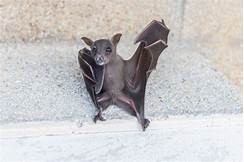How to Dispose of Dead Pets
Losing a pet is never easy. When the time comes to say goodbye, it's important to know how to dispose of your pet's remains in a respectful and responsible manner. There are a few different options available, each with its own advantages and disadvantages.

Burial
Burial is a traditional way to dispose of a pet's remains. You can bury your pet in your own backyard, at a pet cemetery, or in a nature preserve. If you choose to bury your pet at home, be sure to select a spot that is not near any water sources or where other animals might dig up the remains.
Advantages of burial:
• It is a relatively inexpensive option.
• You can choose a burial site that is meaningful to you.
• You can visit your pet's grave whenever you want.
Disadvantages of burial:
• It can be difficult to find a suitable burial site.
• Burial can expose your pet's remains to scavengers.
• Burial can contaminate groundwater.
Cremation
Cremation is another option for disposing of a pet's remains. With cremation, your pet's body is placed in a special oven and burned until only ashes remain. The ashes can then be scattered, buried, or kept in an urn.
Advantages of cremation:
• It is a relatively quick and easy process.
• It is a more sanitary option than burial.
• It is less likely to expose your pet's remains to scavengers.
Disadvantages of cremation:
• It can be more expensive than burial.
• You will not have a physical reminder of your pet, such as a grave or burial site.
• Cremation can release harmful pollutants into the air.
Other Options
In addition to burial and cremation, there are a few other options available for disposing of a pet's remains. These options include:
• Composting: Composting is a process in which organic matter, such as pet remains, is broken down by microorganisms into a nutrient-rich soil amendment. Composting can be a good option for pet owners who want to recycle their pet's remains and give them back to the earth.
• Alkaline hydrolysis: Alkaline hydrolysis is a process in which pet remains are dissolved in a solution of water and alkali. The resulting liquid can then be safely disposed of down the drain.
• Freeze-drying: Freeze-drying is a process in which pet remains are frozen and then dried under a vacuum. The resulting remains are lightweight and easy to store or transport.
When choosing a method for disposing of your pet's remains, it's important to consider your own personal preferences, as well as the cost, convenience, and environmental impact of each option.
Declaration: All article resources on this website, unless otherwise specified or labeled, are collected from online resources. If the content on this website infringes on the legitimate rights and interests of the original author, you can contact this website to delete it.




